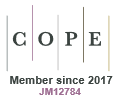Just Accepted
This article has been peer reviewed and accepted for publication. It is in production and has not been edited, so may differ from the final published form.
Perspectives on methods for expressing energy values of poultry feed and energy requirements, 1. History and critique of the metabolisable energy paradigm.
Abstract
Since the 1970’s, the de facto standard for quantifying the energy available in feed ingredients that poultry can utilize has been “Nitrogen-corrected Apparent Metabolizable Energy (AMEn)”. This is surprising for several reasons because: 1) It is accepted that the “apparent” ME underestimates “true” metabolizable energy and therefore underestimates ME; 2) A “nitrogen correction” to estimate what ME would be if the test birds were in nitrogen balance (intake - excretion = 0) is needed to get consistent assay results. In practice, nitrogen balance only applies to mature roosters who are not gaining nor loosing carcass nitrogen; It should not be called a “correction” if it does not apply to the vast majority of producing birds who are in positive nitrogen balance. 3) The results of AME assays are not always additive (e.g., feed fats increase the absorption, and therefore ME, of other ingredients); 4) None of the methods available to estimate the energy in feed ingredients work well in feed formulation; 5). AMEn values are predicted from the archaic Weende method of describing feed composition that was understood to be inadequate over 100 years ago. This paper explores the development of methods of describing feed ingredient energy and how the poultry industry came to use AMEn.
AN25293 Accepted 30 September 2025
© CSIRO 2025



